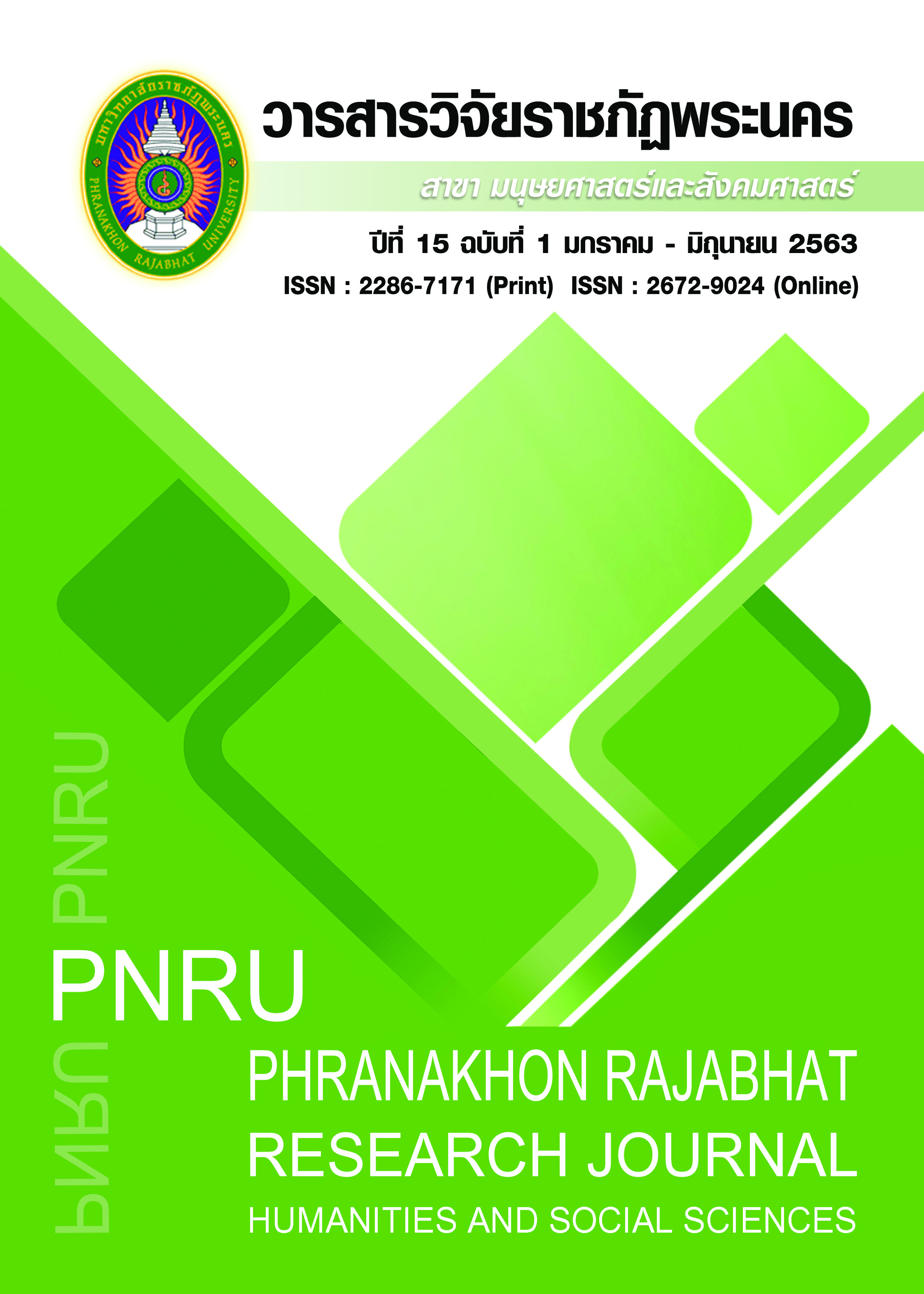CRIME PREVENTION FOR THE ELDERLY
Main Article Content
Abstract
The qualitative method was employed throughout this research where the documents were investigated to review and estimate the bodies of knowledge, concepts, and theories on crimes committed against the elderly, including the survey of problem state, criminal case statistics, and forms of crime committed to the elderly in Thailand. The study indicated that the Elderly, who were the victims of violence, were often women with marital status. Mostly, the cases were about sexual violence, physical abuse, financial and property abuse, neglect, and psychological and emotional abuse. In addition, all of these cases often occurred within the family caused by the stress of offenders. This reflected that the crime situation of violence against the elderly in Thailand was the psychological abuse and neglect. This research can be summarized as a guideline to prevent crimes committed against the elderly in 4 solutions, namely 1. encouraging the elderly to protect themselves; 2. supporting public and community participation to play the role of preventing crime committed against the elderly; 3. crime prevention in the community by public police officers; and, 4. provision of the elderly crime victim service system.
Article Details
Each publish articles were copyright by Phranakorn Rajabhat University
Any contents which appeared in each articles in the journal were authors personal opinion. It did not relate to Phranakorn Rajabhat University and other instructors in the university. Each authors would take responsibility on their articles. If there are any mistake, the authors will take responsibility themselves
References
Burston, G.R. (1975). Granny Battering. British Medical Journal, 3, 592. http://dx.doi.org/10.1136/bmj.3.5983.592-a
Center, Social Help. (2007). Statistics of elderly incidents. Bangkok: Ministry of Social Development and Human Security. (In Thai)
Central Information Technology, Center of Royal Thai Police. (2017). Criminal case statistics. Bangkok: Royal Thai Police. (In Thai)
Center, Social Surveillance and Warning. (2016). Information on the elderly risk survey in Thailand. Bangkok: Ministry of Social Development and Human Security. (In Thai)
Gottfredson, Michel R & Hirschi, Travis (1990). A general theory of crime. Redwood City: Stanford University Press.
National Statistical Office. (2012). Survey of civil crime statistics 2012. Retrieved May 30, 2019, from http://www.nso.go.th/sites/2014/DocLib13/Social/Justice/Criminal statistics/Survey of Crime Statistics in the Civil Sector_2012/7.%20Summary of important result.pdf (in Thai)
Malcolm K. Sparrow. (1988). Implementing Community Policing. National Institute of Justice, November 1988 (pp. 8-9). Washington, DC: U.S. Department of Justice.
Office, National Statistical. (2012). Public crime statistics 2012. Bangkok: National Statistical Office. (In Thai)
Oliver, W.M. (2001). Community-oriented policing: a systemic approach to policing. 2nd edition. Upper Saddle River, Nu: Prentice-Hall, Inc.
Police Division 8, Metropolitan. (2017). Statistics of 4 criminal cases in which the victim is elderly in 2016. Bangkok: Royal Thai Police. (In Thai)
Pramote Prasartkul and Patama Vapattanawong. (2010). Redefine Aging by Remaining Life Expectancy. In Suchada thaweesit (Eds.), Value of the Elderly from the eyes of Thai society (pp.15-28). Institute for Population and Social Research, Mahidol University. (In Thai)
Ruchiwit, M. & Sriwichai, S. (2005). Violence against the elderly in the family in Ban Khwao, Chaiyaphum Province. Thai Mental Health Journal, 12 (1): 49-56. (In Thai)
Social Surveillance and Warning Center. (2007) National elderly risk survey. Bangkok: Ministry of Social Development and Human Security. (In Thai)
Suteesorn, S. (2004). Criminology and synthetic society. Bangkok: Thammasart University. (In Thai)
Trojanowicz, R. C. (1990). Community Policing Is Not Police-Community Relations.'FBI Law Enforcement Bulletin. 59(10): 6–11.
Vold, George B. & Bernard, Thomas J. & Snipes, Jeffrey B. (2002). Theoretical criminology, 5thedition. NY: Oxford University Press.
World Health Organization, (2018 June). Elder abuse. Retrieved May 30, 2019, from https://www.who.int/news-room/fact-shteets/detail/elder-abus


